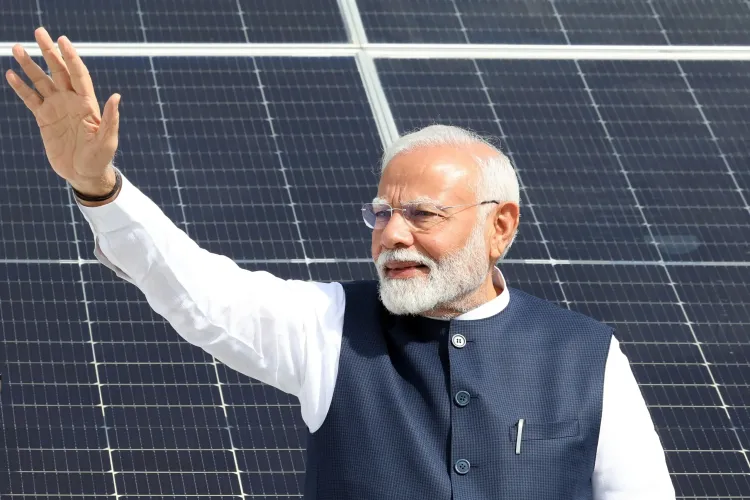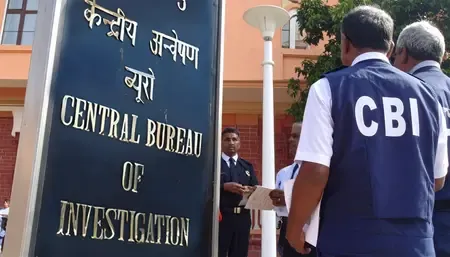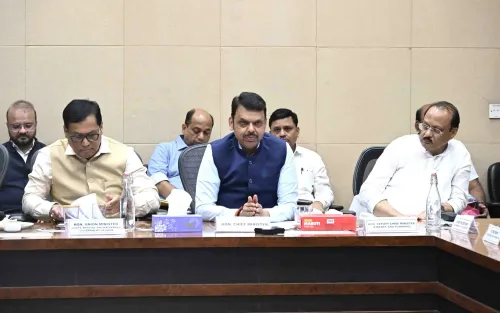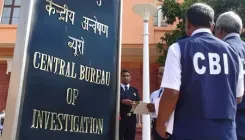Has PMSGY Revolutionized Residential Rooftop Solar with 4,946MW Installed Capacity by July?

Synopsis
Key Takeaways
- PMSGY has installed 4,946MW of rooftop solar capacity by July.
- Over 57.9 lakh applications have been submitted.
- Gujarat leads with 1,491MW of installed capacity.
- Only 13.1 percent of the 1 crore target has been met.
- Clear goals and consumer awareness are critical for future success.
New Delhi, Oct 14 (NationPress) The Pradhan Mantri Surya Ghar Yojana (PMSGY) has significantly reshaped India’s residential rooftop solar landscape, achieving an impressive 4,946MW of capacity installed by July across multiple states and Union territories, as highlighted in a report released on Tuesday.
The PM Surya Ghar: Muft Bijli Yojana, commonly referred to as the rooftop solar initiative, was inaugurated in February 2024 to deliver free electricity to households by subsidizing the installation of rooftop solar panels.
According to the report from the Institute for Energy Economics and Financial Analysis (IEEFA) and JMK Research & Analytics, subsidy distributions for rooftop solar have exceeded Rs 9,280 crore.
With over 57.9 lakh applications submitted for residential rooftop solar setups as of July, PMSGY has experienced remarkable momentum.
"Under PMSGY, Gujarat stands out with the highest installed residential rooftop solar capacity of 1,491MW, followed by Maharashtra, Uttar Pradesh, Kerala, and Rajasthan. Collectively, these states represent around 77.2 percent of the total installed capacity (4,946 MW) under the scheme until July 2025," the report indicated.
Yet, it reported that only 13.1 percent of the target of 1 crore installations has been achieved. This occurs despite a nearly fourfold surge in applications from March 2024 to July 2025.
Moreover, merely 14.1 percent of the designated Rs 65,700 crore in subsidies have been allocated by July. In this context, reaching the fiscal year 2027 goal of 30GW capacity could pose significant challenges, as noted in the report.
“Setting clear, time-bound rooftop solar capacity goals at the state level is critical for fostering a cohesive vision and ensuring effective policy implementation,” remarked Vibhuti Garg, Director, IEEFA - South Asia, and a contributing author.
“Limited consumer awareness and access to financing are notable obstacles to rooftop solar adoption. Outdated beliefs regarding high initial costs and maintenance continue to persist, particularly in rural areas,” added Prabhakar Sharma, senior consultant at JMK Research and co-author of the report.
The report also pointed out that fragmented supply chains for essential rooftop solar components, such as panels, inverters, and mounting systems, are contributing to delays in implementation. While a grievance redressal mechanism has been established under PMSGY, its efficiency is constrained.
“PMSGY should implement a district-level escalation framework to address subsidy disbursement delays, inaccurate data entries, or portal issues beyond the DISCOM or portal level,” suggested Aman Gupta, research associate at JMK Research and co-author of the report.
To enhance the transition from applications to actual installations, state- and district-level facilitation cells should assist households in submitting applications and claiming subsidies. The report also encouraged the promotion of standardized rooftop solar kits, comprising modules, inverters, mounting structures, and cables, as pre-assembled packages to facilitate installation and reduce project delays.
Beyond subsidies, the long-term viability of PMSGY hinges on the establishment of streamlined digital processes, standardized product offerings, and consumer-friendly support systems, according to the report.









